A device that can detect breast cancer through urine, a badge designed to improve personal safety and a navigation solution for deaf-blind individuals are among this years shortlisted projects for Prototypes of Humanity.
The annual programme looks at the most innovative academic projects that aim to address problems affecting people and the planet, engaging with thousands of students and professors across 710 universities in 108 countries. This year, five categories were chosen to reflect key priority areas from the COP28 agenda: Nature, Food and Water systems; Health, Relief and Safety; Energy, Efficiency and Waste; Education, Equality and Communities; and Data science and AI-enabled solutions.
The 100 projects chosen for the shortlist will be presented at an exhibition at Emirates Towers, Dubai, prior to COP28 on 29 and 30 November 2023 alongside supervising professors and team members. Winning projects will be awarded over £80,000 ($100,000) in prize money.
The Blue Box
By Judit Giró Benet, Lidia Navarro Farré, Joan Vieyra Galí, and Celia Mallafré Muro
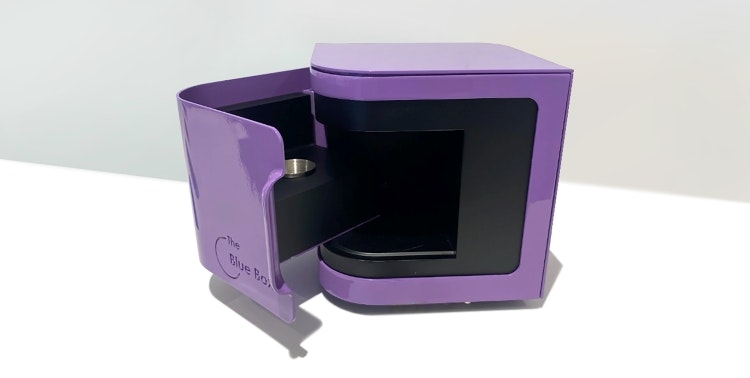
A team from the University of California Irvine designed The Blue Box, a device claims to be able to detect breast cancer in urine with a sensitivity of 83%, accuracy of 79% and specificity of 75%. The team also designed it to be radiation-free, pain-free, accessible, low-cost and easy-to-operate.
1 in 8 women will have breast cancer at least once and although it is one of the most treatable cancers, it is the deadliest in women, according to the team’s research. They found that this was not due to a lack of treatment options but a lack of accessibility to early-stage diagnostics, an issue which their device hopes to change.
Some breast cancer biomarkers in urine evaporate when heated up, filling the space between the sample and sensor array inside The Blue Box. The sensor array reacts to the intensity of the biomarkers and an AI algorithm is able to recognise certain patterns that are indicative of breast cancer.
eNough
By Gaelic Jara Reinhold and Ina Jovicic
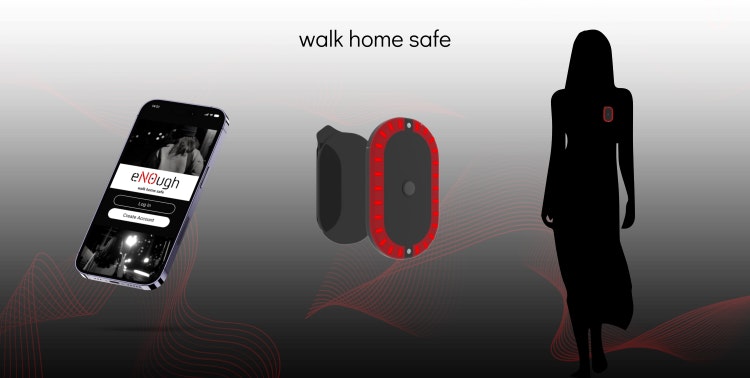
University College London’s invention, which combines hardware and software, looks to combat the dangers of walking alone at night. It is described as “a visible deterrent” that can also automate the process of getting help while gathering vital evidence if an incident occurs while someone is walking home alone.
As a group prepares to part ways for the evening, each member can attach a magnetic smart badge. When they open the corresponding app and scan a QR code, it initiates a group walk, connecting them all digitally. Once any member reaches their destination, the rest receive a notification.
The badge features a distress button that sends out an alert to the user’s contact and emits a loud alarm sound when pressed. If the user’s phone is stolen, the badge causes it to ring.
Plad
By Joshua Atta Alabi, Gabriella Selorm Gbekie, and Ebenezer Ayaaba

Sanitary pads made from plantain pseudo-stems (the trunk-like part of the plantain plant) designed by a team from Kwame Nkrumah University of Science and Technology aim to offer a sustainable and eco-friendly menstrual hygiene alternative. While traditional pads made from synthetic materials are harmful to the environment, the plantain-based pads are biodegradable, comfortable and absorbent.
This solution looks to tackle both environmental pollution caused by non-biodegradable menstrual products and the lack of affordable, accessible sanitary items for females in underserved communities.
Hipcare
By María Paula Rodríguez Garavito, Júlia Robledo Carrió, Arsenio Andrea Meomartino, María Songel Sanchis, Eva Vera García, and Lucía Solinís Puertas
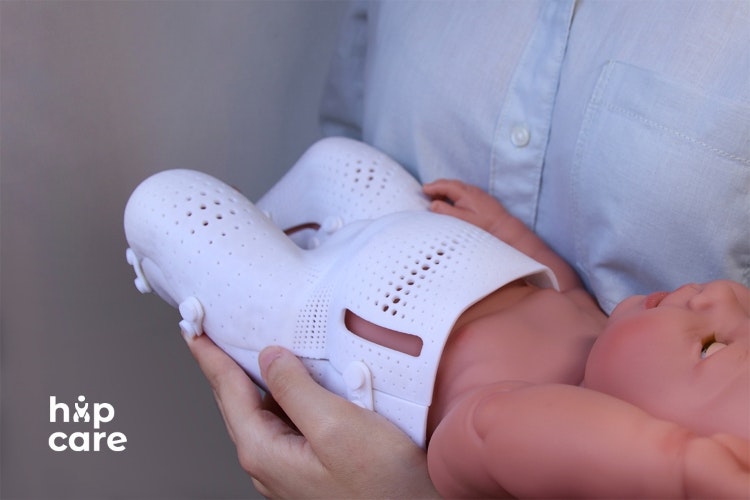
A team from Barcelona design and engineering research institution Elisava has developed Hipcare, a 3D-printed orthopaedic solution for treating infant hip dysplasia. It is an alternative to conventional plaster casts and comprises polylactic acid and copper particles.
Its innovation lies in the ability to customise the product, using radiography results to create a preconfigured splint tailored to each baby’s body. The team claims that this not only simplifies application but eliminates the need for repeated anaesthesia during replacements and enhances overall comfort.
PolarisMaps
By Tin Wing Kam and Chan Cheuk Yin
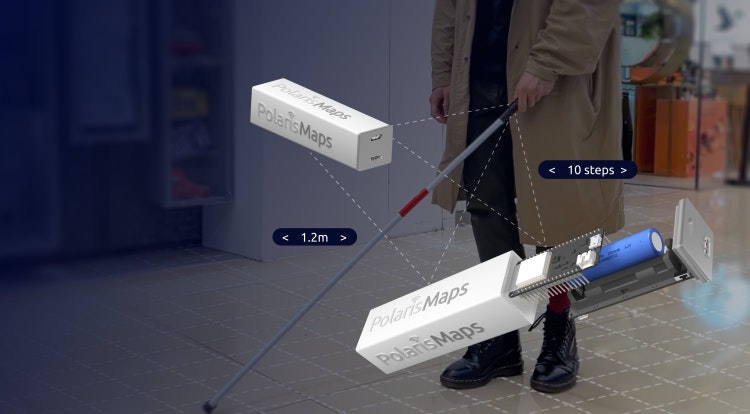
The PolarisMaps project by a design team from The Hong Kong Polytechnic University is an accessible indoor navigation app created to improve the lives of individuals with deaf-blindness. The three-step solution uses customisable visual and auditory features that allow deaf-blind individuals to discover new places safely and with confidence.
In the future, the team plans to upgrade the app to incorporate new technologies such as machine-learning algorithms, which could enhance the app’s accessibility and functionality.
Oasis
By Joel Olympio
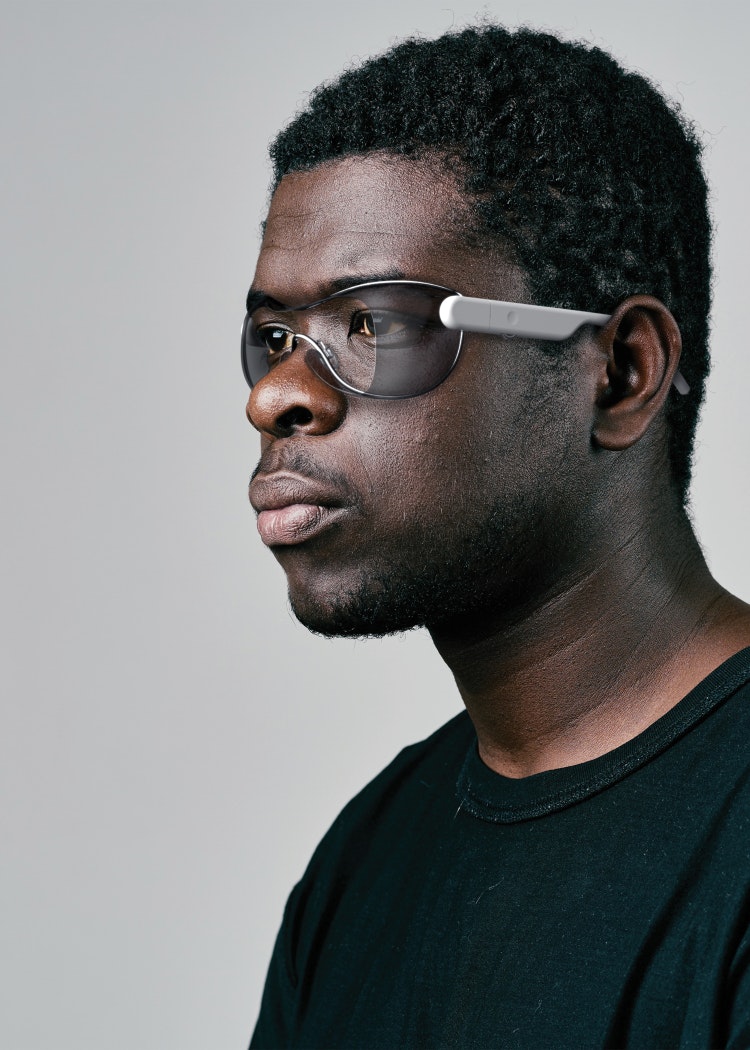
Oasis is a pair of glasses designed to increase focus in open working environments that dims the user’s surroundings using electrochromic film. Research by Joel Olympio, the University of Limerick student who is responsible for the project, found that people with ADHD – and even those who aren’t neurodiverse -can benefit from a more focused environment.
While Oasis provides a sense of a closed, focused space, the user can also quickly turn off the dimming without removing the glasses. Oasis also uses haptic engines which create a gentle chime, inspired by ancient meditation techniques.

- Design disciplines in this article
- Industries in this article








One response to “Breast cancer detection and safety devices: the Prototypes of Humanity shortlist”
Anyone else see the horse blinker glasses as problematic, or is that just me?